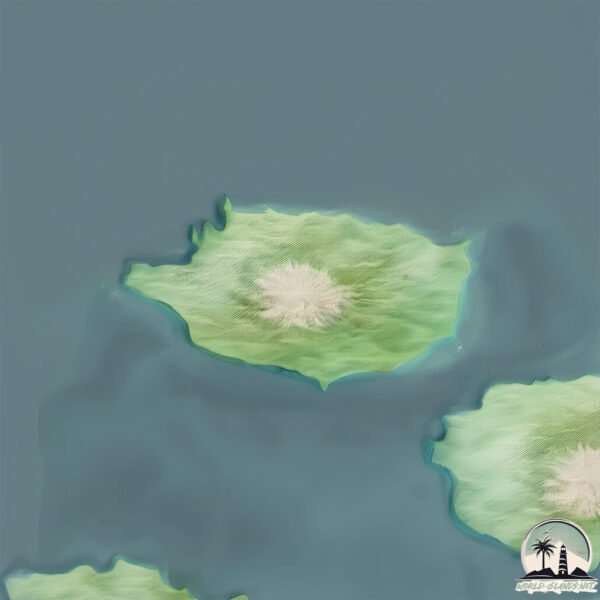Carlisle

Welcome to Carlisle, a Tropical island in the Coral Sea, part of the majestic Pacific Ocean. This guide offers a comprehensive overview of what makes Carlisle unique – from its geography and climate to its population, infrastructure, and beyond. Dive into the details:
- Geography and Size: Explore the island’s size and location.
- Climate and Weather: Weather patterns and temperature.
- Topography and Nature: Uncover the natural wonders of the island.
- Infrastructure and Travelling: Insights on reaching, staying, and making the most of your visit.
- News and Headlines: Latest News.
Geography and size of Carlisle
Size: 5.799 km²
Coastline: 12.4 km
Ocean: Pacific Ocean
Sea: Coral Sea
Continent: Oceania
Carlisle is a Small Island spanning 5.8 km² with a coastline of 12.4 km.
Archipel: –
Tectonic Plate: Australia – A major tectonic plate covering Australia, New Zealand, and parts of the Indian and Pacific Oceans, known for its relative stability and occasional seismic activity.
The geographic heart of the island is pinpointed at these coordinates:
Latitude: -20.78915789 / Longitude: 149.28787461
Climate and weather of Carlisle
Climate Zone: Tropical
Climate Details: Tropical Savanna, Wet
Temperature: Hot
Climate Characteristics: Defined by distinct wet and dry seasons with high temperatures year-round. Pronounced rainfall occurs during the wet season, while the dry season is marked by drought.
Topography and nature of Carlisle
Timezone: UTC+10:00
Timezone places: Australia/Sydney
Max. Elevation: 234 m
Mean Elevation: 100 m
Vegetation: Evergreen Broadleaf Forest
Tree Coverage: 92%
The mean elevation is 100 m. The highest elevation on the island reaches approximately 234 meters above sea level. The island is characterized by Hills: Gently sloping landforms with rounded tops, having a maximum elevation between 200 and 500 meters. Hills contribute to a varied landscape on islands.
Dominating Vegetation: Evergreen Broadleaf Forest
Characterized by dense, lush canopies of broadleaf trees that retain their leaves year-round. These forests are typically found in tropical and subtropical regions and are known for their high biodiversity. Carlisle has a tree cover of 92 %.
Vegetation: 5 vegetation zones – Highly Diverse Island
With five different vegetation zones, these islands offer a rich tapestry of ecosystems. The variety could include dense forests, open meadows, wetlands, coastal zones, and more. This level of diversity supports an intricate web of life, with each zone playing a vital role in the overall ecological health and balance of the island.
Infrastructure and Travelling to Carlisle
Does the island have a public airport? no.
There is no public and scheduled airport on Carlisle. The nearest airport is Mackay Airport, located 42 km away.
Does the island have a major port? no.
There are no major ports on Carlisle. The closest major port is MACKAY, approximately 36 km away.
The mean population of Carlisle is 1 per km². Carlisle is Gently Populated. The island belongs to Australia.
Continuing your journey, St. Bees is the next notable island, situated merely km away.
Fast Forward to Queensland: Carlisle/Brampton Islands to Goldsmith Island 26JUL24.



Australia is classified as Developed region: nonG7: Developed economies outside of the Group of Seven, characterized by high income and advanced economic structures. The level of income is High income: OECD.
News – Latest Updates and Headlines from Carlisle
Stay informed with the most recent news and important headlines from Carlisle. Here’s a roundup of the latest developments.
Please note: The data used here has been primarily extracted from satellite readings. Deviations from exact values may occur, particularly regarding the height of elevations and population density. Land area and coastline measurements refer to average values at mean high tide.
